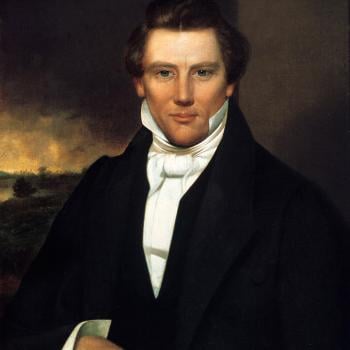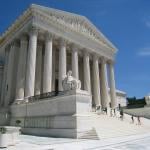When the Supreme Court overturned Roe v. Wade three years ago today in the case Dobbs v. Jackson Women’s Health Organization, both sides in the abortion fight expected the results to be momentous. Some pro-lifers jubilantly predicted that numerous unborn human lives would be saved, while some abortion rights advocates envisioned a dark future in which women across much of the United States would be forced to carry unwanted pregnancies to term or would seek out illegal abortion providers. Other supporters of abortion rights hopefully predicted that there would be a popular uprising against Dobbs that would force the reversal of this decision, either through the legislative or judicial process.

Three years later, the results of Dobbs don’t seem to clearly match any of these predictions. Abortion rates actually increased after Dobbs. Abortion opponents lost most of the battles over abortion referendums – which is one reason why abortion remains legal in most of the country.
But at the same time, the decision hasn’t been reversed, and Democrats have not succeeded in protecting abortion rights at the national level. Although the Democratic Party spent $175 million in abortion-themed advertising in 2024 Senate races, they were not able to maintain control of the Senate or win the presidency – let alone reverse Dobbs.
Yet if Dobbs did not end the national stalemate over abortion – and if it arguably did not save unborn lives, given the increase in the number of abortions that occurred after Dobbs – it nevertheless was still enormously significant, for reasons that are only indirectly related to abortion.
What Dobbs Was All About
If the pro-lifers’ objective was to save as many unborn lives as possible, overturning Roe v. Wade in 2022 was arguably not a very promising way to do this.
The states that implemented abortion bans immediately after the decision already had very few abortion clinics, because their pre-Dobbs abortion laws were already strict enough to drive out most abortion providers. There simply was not much room to drive down the low abortion rates in these socially conservative red states any further. In the immediate aftermath of Dobbs, the new national publicity about abortion pills, combined with the expansion of abortion funding or abortion availability in some blue states, more than offset the modest reductions in the number of abortions for residents of a few restrictive red states.
But maybe Dobbs’s real significance was about something other than abortion rates or abortion availability. Perhaps it was a momentous decision not because of what it said about abortion but because of what it implied about the meaning of the Constitution.
In the course of research for my forthcoming book Abortion and America’s Churches (which will be released by the University of Notre Dame Press on October 1), I noticed how much the American debate over abortion both before and after Roe v. Wade revolved around a question of the meaning of America’s founding. For pro-lifers, the nation’s founding documents – the Declaration of Independence and the Constitution – could not have included the protection of abortion rights, because in their view, abortion directly contradicted the promise of equality and inalienable human rights on which the country was founded. A nation founded on the promise of “life, liberty, and the pursuit of happiness” could not deny the right to life for any class of individuals without undermining the entire foundation of America.
Pro-life legal advocates made this argument as early as the mid-1960s, at a time when the pro-life movement was still overwhelmingly Catholic. But when evangelical Protestants embraced the pro-life cause in the 1970s, they became enthusiastic champions of this argument as well. In fact, the connection between the pro-life cause and national identity was one of the main reasons why they were attracted to the pro-life campaign.
For evangelical pro-lifers, Roe v. Wade became a symbol of moral relativism, secularism, and the sexual revolution, because, as Francis Schaeffer argued, it replaced a view of divinely given moral absolutes and fixed constitutional meanings with a socially determined, relativistic view of rights that could arbitrarily deny the right to life to the unborn simply because that right was no longer socially in vogue.
This critique of Roe v. Wade as an assault on the fixed meaning of the Constitution and the principles of America’s founding quickly merged with a widespread conservative evangelical view of America’s Christian founding. In this narrative, the founders were motivated by Christian principles, which they enshrined in the Declaration and Constitution. Those who wanted to deprive the unborn of their right to life used their power on the Supreme Court to reinterpret the Constitution in ways that were directly contrary to the principles of this Christian founding. The pro-life movement, in seeking to overturn Roe v. Wade, sought a restoration of America’s founding principles.
The abortion rights movement was also fighting for a particular constitutional narrative – one that was directly opposed to the narrative proposed by pro-life Christians. In the narrative proposed by the abortion rights movement, the Constitution (including the original document of 1787 and the Bill of Rights, but perhaps even more importantly, the Fourteenth Amendment) contained a promise of equality that was unrealized at the time. It was only in the mid-twentieth century that the Supreme Court, by applying the Bill of Rights to the states, strengthening the “wall of separation” between church and state, and upholding the rights of minorities based on the general principles of the Constitution, began to expand that promise to include most Americans, including women and African Americans.
For advocates of abortion rights, Roe v. Wade was significant not only because of what it said directly but because of what it symbolized as the culmination of several decades of a liberal Supreme Court’s understanding of the rights that were included in the “penumbra” of the Constitution. It upheld the principles of a pluralistic, secular society and an individualistic framework for protecting personal sexual and reproductive autonomy. And though many progressives would have preferred for the Court to ground its abortion rights declaration in the principle of equality rather than the principle of sexual and reproductive privacy, they would be willing to settle for what they could get in Roe v. Wade. Roe was based on a mid-twentieth-century liberal understanding of the Fourteenth Amendment, and if it were rescinded, numerous other cases that were also based on an expansive understanding of the promise of the Fourteenth Amendment – including especially the Court’s landmark gay rights decisions – might also be in jeopardy.
The debate between the two sides was thus a debate over the meaning of the nation’s founding. Was the nation founded as a Christian nation based on a fixed understanding of unchanging natural rights that did not include the right to terminate the lives of the unborn? Or was the nation instead founded as a pluralistic, secular enterprise, with a promise of equality that took centuries to fully realize, but that was becoming more apparent in the mid-twentieth century than it had been before?
This latter view was at the heart of the liberal judicial project of the Warren Court (1953-1969), and it was based closely on the understanding of liberal democracy that liberal Protestants had at the time. It also became the view of secularized liberals who retained the view of liberal democratic pluralism and equality that mid-twentieth-century liberal Protestants had promoted, even if they no longer grounded this vision in a religiously inspired framework. And it appealed to some liberal Catholics who found congruencies between liberal Protestant principles and their own faith. As long as liberal Protestants remained culturally dominant in the United States, this vision was protected.
But many conservative evangelical Protestants and conservative Catholics opposed both this understanding of the nation’s identity. As liberal Protestantism’s cultural influence eroded, a conservative coalition eventually gained enough political and judicial power to rescind Roe v. Wade. Even if social conservatives did not have enough power to significantly restrict abortion availability across the nation, they had nevertheless accomplished their objective of removing the Court’s endorsement of a view of the Constitution that they considered abhorrent. According to the Court, the Constitution did not protect abortion. For the sake of conservative Christians’ own understanding of the nation’s founding identity, this alone was reason enough to celebrate. And for liberals, this alone was sufficient reason to mourn.
The political battles over abortion during the two years following Dobbs were intense not so much because abortion alone was at stake, but because the meaning of the nation’s founding principles was also on the line. In the end, conservatives won this battle, at least if victory was defined as being able to retain the Court’s declaration in Dobbs. And progressives, in turn, mostly won their campaign to keep conservatives from making abortion illegal in all but the most conservative of states.
What Dobbs Could Not Do
The outcome that Dobbs produced may endure for a long time as an uneasy compromise, but it’s probably not going to prove very satisfying for anyone. Dobbs stopped short of saying what many pro-lifers really want: a declaration that the Constitution is not merely neutral on abortion but that it actually affirms the right to life for the unborn. And for pro-choice liberals, the situation is even more untenable, since it leaves intact a major blow against their vision of constitutional equality and potentially opens the legal door for further challenges to that vision in the future.
Dobbs, in other words, told us what the Constitution does not mean – but it did not really tell us what it does mean. It did not answer the question of what our real identity as a country is and how we should understand our founding values. It erased a critical cornerstone of the mid-twentieth-century liberal Protestant framework for equality and liberal democracy, but it did not point us to another alternative framework for understanding who we are as a nation.
Three years later, we are still trying to find this alternative framework. But if the Supreme Court failed to give us this framework in Dobbs, that may not be the fault of the Court alone. It may be a reflection of our fractured society.
In the years leading up to Dobbs, Americans were arguably becoming even more polarized over abortion than they were before. Liberal Protestant denominations that had once held more centrist positions on abortion that expressed ambivalence about its morality passed resolutions expressing a stronger commitment to reproductive justice because of their newfound assertion that abortion was health care. The General Assembly of the Presbyterian Church (USA) passed a resolution in 2012 stating that “full access to reproductive health care” (including abortion) was included in the “basic human right” to health care. The Episcopal Church declared in 2018 that “equitable access to women’s health care, including women’s reproductive health care, is an integral part of a woman’s struggle to assert her dignity and worth as a human being.”
As mainline Protestants strengthened their endorsement of abortion rights, conservative evangelicals and conservative Catholics moved in the opposite direction. The Southern Baptist Convention passed a “no exceptions” resolution against abortion in 2021, calling on elected officials to “interpose on behalf of the preborn, abolishing abortion immediately, without exception or compromise.” The US Conference of Catholic Bishops, which had always been strongly opposed to abortion, signaled the importance that it accorded the issue in the political realm when it issued a letter to Catholics in 2019 declaring that abortion would be its “preeminent priority” in the upcoming presidential election because “it directly attacks life itself, because it takes place within the sanctuary of the family, and because of the number of lives destroyed.”
Given this increasing polarization among American Christians – let alone among non-Christian Americans – it was perhaps not surprising that Dobbs could not settle the abortion debate. Today, three years after Dobbs, we continue to be divided not only over abortion but over which framework that we should use to interpret the meaning of the founding principles of rights and equality.
The Supreme Court, it appears, cannot answer those questions for us. But the imperative to seek those answers – and above all, to seek a just and equitable social order – is more imperative than ever.
Perhaps the lasting legacy of Dobbs will depend not so much on what the Supreme Court did in 2022, but on what we do in 2025 and beyond.











